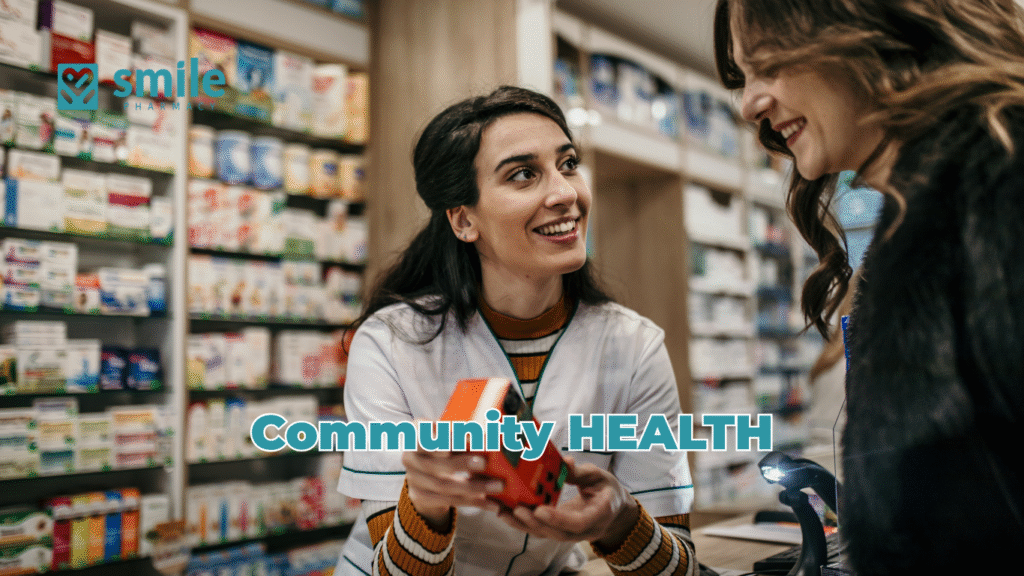Understanding the Importance of Community Outreach
Definition of Community Outreach
best pharmacist gifts aren’t always for the pharmacists themselves—sometimes, they’re the thoughtful gestures pharmacists give to the communities they serve. At The Smile Pharmacy, every outreach event is a chance to share more than medicine: from free wellness kits at local health fairs to personalized pill organizers for seniors, each gift is chosen to make health easier, warmer, and more accessible. These acts of kindness turn simple items into symbols of care, reminding every patient that their well-being is at the heart of everything we do.

Benefits of Community Engagement
Engaging with the community can yield significant benefits for both the providers and the people being served. Some of the key advantages of effective community engagement include:
- Building Trust: Regular interactions foster a sense of reliability between the pharmacy and the community, enhancing trust in the pharmacists.
- Improving Health Outcomes: Access to health education and resources can lead to better health management, resulting in decreased hospital visits and medication errors.
- Enhancing Awareness: Community outreach can raise awareness about local health issues, such as diabetes management or vaccine availability, benefiting everyone.
For example, a pharmacy that hosts a monthly health fair not only educates attendees but also strengthens its role as a vital community resource. By understanding the importance of community outreach, pharmacies can empower individuals and create a healthier community.

The Role of Pharmacies in Community Outreach
Providing Health Education and Awareness
Pharmacies play a pivotal role in delivering health education and raising awareness in their communities. Beyond simply filling prescriptions, knowledgeable pharmacists can provide valuable insights on medication usage, side effects, and healthy lifestyle choices. For instance, consider a pharmacist who holds a weekly workshop on diabetes management. Participants can learn about dietary choices, blood sugar monitoring, and effective medication adherence, bridging the gap between clinical guidelines and everyday life.
Key strategies include:
- Information Dissemination: Providing flyers, pamphlets, or digital resources on topics like smoking cessation or nutrition.
- Interactive Workshops: Hosting events where community members can openly discuss their health concerns and receive professional advice.
Offering Support and Assistance to Underserved Populations
Pharmacies also serve as a safety net for underserved populations. Many individuals may lack access to healthcare services, making pharmacists essential in providing the support they need. For example, a pharmacy may offer sliding scale fees for consultations or partner with local charities to provide free medication to those in financial distress.
Consider these approaches:
- Mobile Clinics: Collaborating with local organizations to bring essential healthcare services directly to underserved neighborhoods.
- Personalized Medication Reviews: Assisting individuals in understanding their medications and ensuring they are taking them correctly, particularly for those with language barriers.
Through these initiatives, pharmacies not only enhance community health but also cultivate a sense of belonging and support among residents.
Initiatives and Programs for Community Support
Health Screenings and Vaccination Drives
Pharmacies engage in various proactive initiatives, with health screenings and vaccination drives being at the forefront. These programs not only promote community wellness but also foster an environment of preventive healthcare. For example, a local pharmacy might organize a monthly blood pressure screening event. Attendees can gain insights into their cardiovascular health and receive personalized advice on managing their risks.
Key components of these initiatives include:
- Convenient Locations: Setting up health screenings inside the pharmacy allows easy access for community members.
- Collaboration with Healthcare Providers: Partnering with local clinics to ensure comprehensive care during vaccination drives.
These efforts can significantly increase vaccination rates, contributing to community herd immunity against infectious diseases.
Medication Adherence Programs
Ensuring that patients take their medications as prescribed is crucial for health management, particularly for chronic diseases. Pharmacists often implement medication adherence programs tailored to individual needs.
For example:
- Medication Synchronization: Coordinating refill dates for patients to help simplify their medication routines.
- Pharmacy Call-Backs: Regular follow-ups to remind patients about their medications and address any concerns.
These programs empower individuals to manage their health proactively, leading to improved outcomes and better quality of life. By fostering trust and support, pharmacies become integral to the community’s health landscape.
Collaborations and Partnerships for Effective Outreach
Working with Local Organizations and Charities
To amplify their outreach efforts, pharmacies often collaborate with local organizations and charities. These partnerships can significantly enhance the impact of community initiatives by pooling resources and expertise. For instance, a pharmacy might partner with a local food bank to offer nutritional counseling alongside food distribution, ensuring families have access to both food and health education.
Some effective strategies include:
- Joint Health Fairs: Bringing together various health and wellness organizations to provide comprehensive services in one event.
- Resource Sharing: Collaborating on campaigns to distribute flyers that promote health resources available within the community.
By working together, pharmacies and local charities can create a more robust support system for those in need.
Engaging with Community Leaders and Stakeholders
Engaging with community leaders and stakeholders is another critical aspect of effective outreach. By fostering relationships with these individuals, pharmacies can better understand the unique needs of their community.
For example, a pharmacy might invite local leaders to quarterly meetings to discuss public health concerns and outline strategies to address them.
Benefits include:
- Building Trust: Establishing strong connections with community figures builds credibility for outreach programs.
- Influencing Policy: Engaging with local decision-makers can lead to supportive policies that enhance health access.
Through these collaborative efforts, pharmacies can significantly expand their outreach and make a lasting difference in community health.

Impact Assessment and Success Stories
Measuring the Effectiveness of Outreach Programs
To ensure outreach programs are making a real difference, pharmacies must regularly measure their effectiveness. This involves gathering data on various metrics, such as the number of participants in health screenings or vaccination rates before and after a campaign. For example, a pharmacy that implements a chronic disease management program might track patient adherence rates over six months to assess improvements in health outcomes.
Key methods for impact assessment include:
- Surveys and Feedback Forms: Gathering participant input helps refine future programs and demonstrates areas of success.
- Health Outcomes Tracking: Monitoring changes in community health indicators can help determine the overall impact of initiatives.
These assessments not only highlight success but also guide future efforts.
Sharing Inspiring Stories of Community Transformation
Highlighting success stories can serve as powerful motivators for both the pharmacy team and the community. For instance, a pharmacist might share a story about a patient who, after attending educational workshops, successfully managed their diabetes and improved their quality of life.
Such narratives:
- Encourage Participation: Seeing real transformations can inspire others to engage with services.
- Build Community Pride: Success stories remind everyone of the positive changes occurring within the community.
By celebrating these achievements, pharmacies can foster a culture of health and wellness that resonates throughout the community.

Future Directions and Sustainability in Community Outreach
Implementing Long-term Engagement Strategies
As pharmacies look to the future of community outreach, implementing long-term engagement strategies becomes crucial. Building lasting relationships ensures that outreach programs remain relevant and beneficial to the community. For example, a pharmacy might establish an ongoing health ambassador program, empowering community members to promote health education alongside pharmacists.
Key strategies for long-term engagement include:
- Regular Feedback Loops: Continuously seeking input from the community allows pharmacies to adapt their services to meet evolving needs.
- Educational Series: Offering a series of workshops over months can help reinforce health information and keep participants engaged.
These strategies not only enhance community participation but also contribute to a sense of ownership among residents.
Ensuring Continuity and Growth in Outreach Efforts
To foster sustainability, pharmacies must plan for continuity and growth in their outreach efforts. This can involve seeking external funding opportunities or forming partnerships with health organizations for long-term projects.
Considerations include:
- Grant Applications: Actively pursuing grants ensures the financial resources needed to sustain programs.
- Mentorship Programs: Collaborating with established pharmacies on outreach initiatives can provide invaluable insights and strategies to new efforts.
By laying down a strong foundation for continuity and growth, pharmacies can ensure their community outreach remains impactful and enriching for years to come.